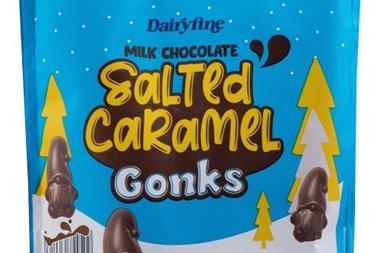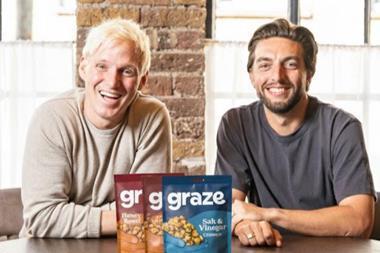Taxation and the threat of minimum pricing are just the tip of the iceberg for beer suppliers. The cost of key ingredients is rising too, says Robert Miles
It might be time to get the last pint in as beer prices look to be moving in only one direction upwards.
World production levels of barley one of the key ingredients in beer are set to fall to a four-year low this season, raising the prospect of price hikes and possible supply shortages. Then there is the effect of the UK government's latest tax moves.
Beer prices have already been rising faster than inflation and the latest VAT increase has put the price of a typical pub pint above £3 for the first time, with further tax hikes of over 5p on a pub pint expected in March.
UK beer consumption is among the highest in the world, and most of what's drunk in the UK is still actually produced here. For a typical mass-produced pint, the wholesale cost breakdown is about a third for taxes, a third for retail and distribution, 14% packaging, 7% ingredients, 5% advertising, 5% energy, 5% labour and 5% brewer profit.
For most beers, the production process is similar, with four main ingredients barley, hops, yeast and water.
Ominously, at 123.7 million tonnes, world barley production is set to fall to its lowest level for four years this season. EU barley production is expected to be 53.4 million tonnes, down 13% on last season's volumes. Yet barley consumption in the EU is forecast at 59.5 million tonnes. Global ending stocks, the amount of barley available worldwide at the end of the crop year, are therefore forecast to be down 43% on last season.
In a more typical year, the costs of ingredients, labour, production, packaging and energy do not tend to vary, but the commodities boom has seen the price of many key ingredients, packaging and energy rise above their long-term historic norms. Consequently, the price of beer production has moved significantly up in proportion to the price; in the case of ingredients, for example, they have risen from about 3-4% to 7%-10% of the wholesale price of a pint.
At 90% by volume, the main constituent of beer is water. A lot of it is also used in the production process, meaning it can make up a significant proportion of the direct production costs. Many breweries have their own water source, but due to rising energy costs and higher overheads, smaller micro-breweries in particular will notice a hike in the cost of their supply.
About a third of the cost is for retail and distribution, while other relevant costs are packaging (14%), advertising (5%), labour (5%) and energy (5%). With a budget of more than £50m for big breweries, advertising and marketing costs are important factors to consider. These often go through changes of emphasis, but there is usually a regular spend, associated with the cost of maintaining product awareness and market share. This is typically topped up by seasonal or promotional spending at key times.
The government is committed to introducing a minimum price for alcohol, and while this might punish sensible consumers and damage the industry at the lower end, commodity price rises might yet get there first and force prices up for all concerned.
It might be time to get the last pint in as beer prices look to be moving in only one direction upwards.
World production levels of barley one of the key ingredients in beer are set to fall to a four-year low this season, raising the prospect of price hikes and possible supply shortages. Then there is the effect of the UK government's latest tax moves.
Beer prices have already been rising faster than inflation and the latest VAT increase has put the price of a typical pub pint above £3 for the first time, with further tax hikes of over 5p on a pub pint expected in March.
UK beer consumption is among the highest in the world, and most of what's drunk in the UK is still actually produced here. For a typical mass-produced pint, the wholesale cost breakdown is about a third for taxes, a third for retail and distribution, 14% packaging, 7% ingredients, 5% advertising, 5% energy, 5% labour and 5% brewer profit.
For most beers, the production process is similar, with four main ingredients barley, hops, yeast and water.
Ominously, at 123.7 million tonnes, world barley production is set to fall to its lowest level for four years this season. EU barley production is expected to be 53.4 million tonnes, down 13% on last season's volumes. Yet barley consumption in the EU is forecast at 59.5 million tonnes. Global ending stocks, the amount of barley available worldwide at the end of the crop year, are therefore forecast to be down 43% on last season.
In a more typical year, the costs of ingredients, labour, production, packaging and energy do not tend to vary, but the commodities boom has seen the price of many key ingredients, packaging and energy rise above their long-term historic norms. Consequently, the price of beer production has moved significantly up in proportion to the price; in the case of ingredients, for example, they have risen from about 3-4% to 7%-10% of the wholesale price of a pint.
At 90% by volume, the main constituent of beer is water. A lot of it is also used in the production process, meaning it can make up a significant proportion of the direct production costs. Many breweries have their own water source, but due to rising energy costs and higher overheads, smaller micro-breweries in particular will notice a hike in the cost of their supply.
About a third of the cost is for retail and distribution, while other relevant costs are packaging (14%), advertising (5%), labour (5%) and energy (5%). With a budget of more than £50m for big breweries, advertising and marketing costs are important factors to consider. These often go through changes of emphasis, but there is usually a regular spend, associated with the cost of maintaining product awareness and market share. This is typically topped up by seasonal or promotional spending at key times.
The government is committed to introducing a minimum price for alcohol, and while this might punish sensible consumers and damage the industry at the lower end, commodity price rises might yet get there first and force prices up for all concerned.
















No comments yet